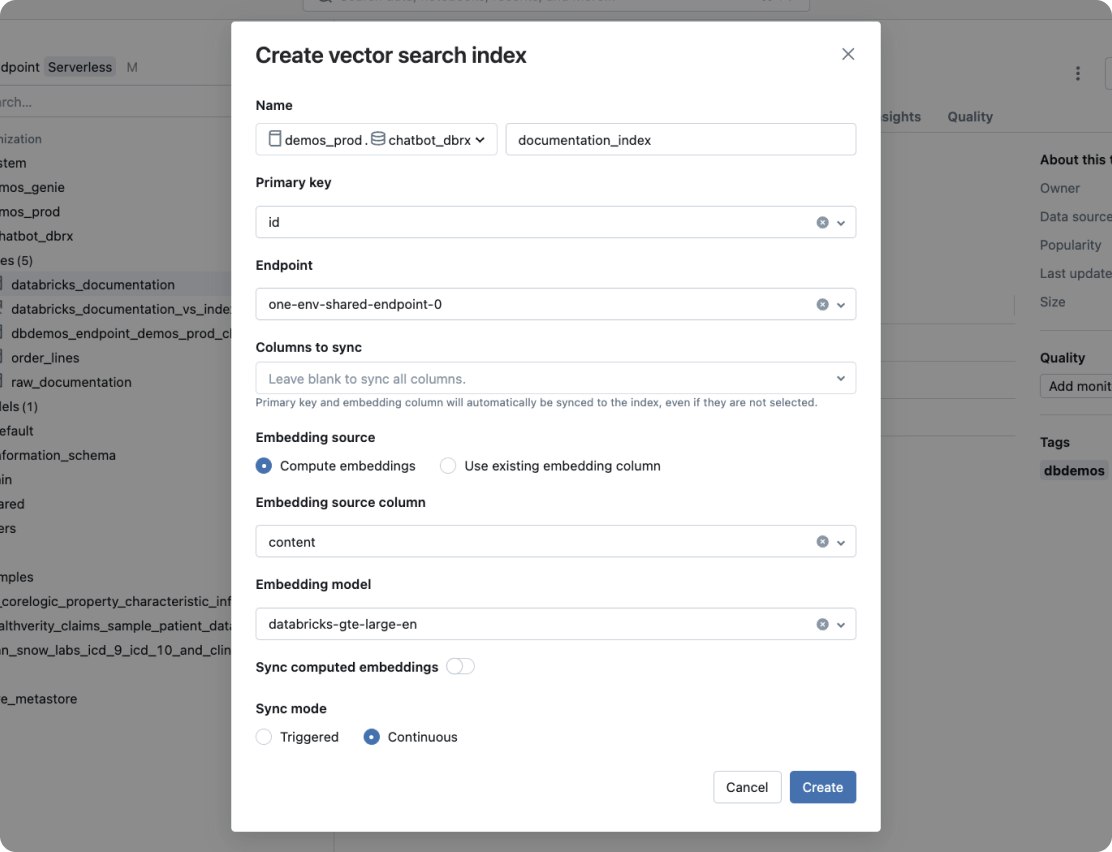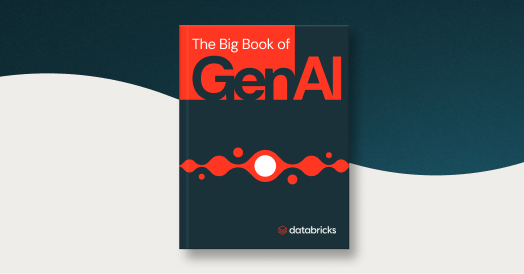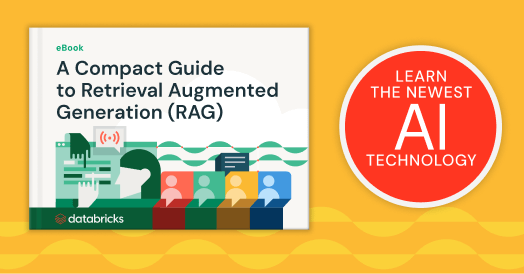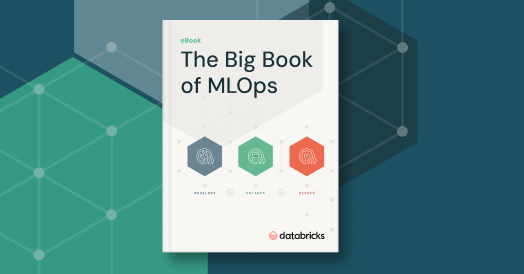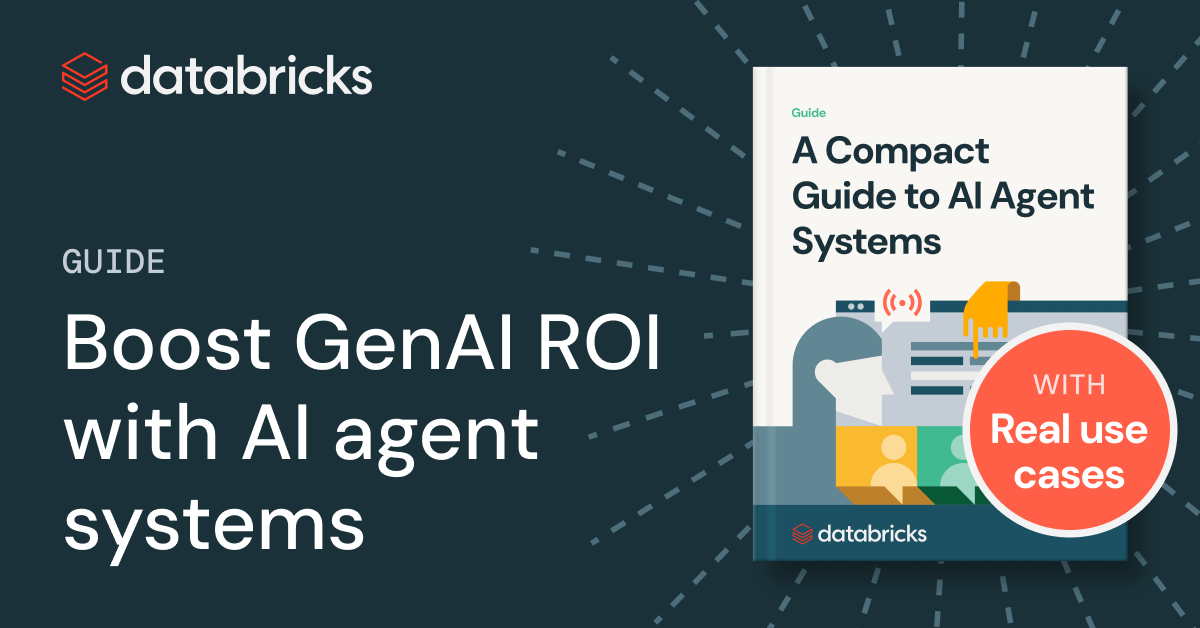Build and deploy quality AI agent systems
Securely connect your data with any AI model to create accurate, domain-specific applications.
TOP TEAMS SUCCEED WITH MOSAIC AI
The only unified platform for agent systems
Stop relying on generic AI models. Databricks has the tools to build agent systems that deliver accurate, data-driven results.44% improvement in accuracy
$10M in productivity gains
96% accuracy of responses
Tools for end-to-end AI agent systems
Agent Bricks
Build AI agents grounded in your enterprise data. Databricks Agent Bricks lets you optimize quality and cost with synthetic data, custom evaluation, and automated tuning.
AI Gateway
Consistently apply data governance across every GenAI model in your enterprise.
Vector Search
A highly performant vector database with real-time syncing of source data.
Agent Framework and Evaluation
Build production-quality AI agents with Agent Framework. Agent Evaluation, an integral feature of the framework, ensures agent output quality with AI-assisted assessments and offers an intuitive UI for feedback from human stakeholders.
Model Serving
Unified deployment for agents, GenAI and classical ML models.
Model Training
Fine-tune open source LLMs, pretrain custom LLMs or build classical ML models.
Databricks Notebooks
Boost team productivity with Databricks Collaborative Notebooks, enabling real-time collaboration and streamlined data science workflows.
Managed MLflow
Extend open source MLflow, a unified MLOps platform for building better models and generative AI apps, with enterprise-grade reliability, security and scalability.
Data Quality Monitoring
Simple, scalable monitoring that detects anomalies, tracks freshness, and delivers consistent quality signals across your AI assets.
The Databricks Data Intelligence Platform
Explore the full range of tools available on the Databricks Data Intelligence Platform to seamlessly integrate data and AI across your organization.
Build high-quality agent systems
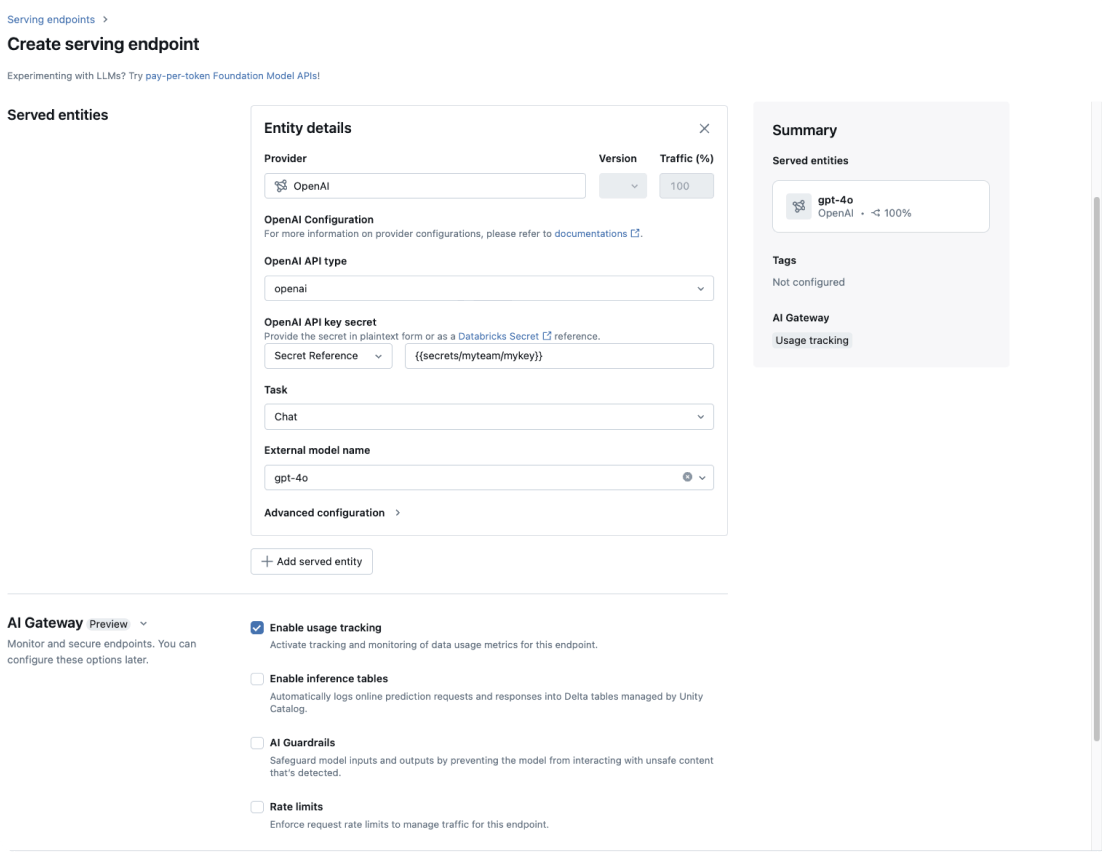
Compare and use any combination of GenAI models, classical ML models and tools
Efficiently manage and customize your AI models
Mosaic AI Gateway allows you to manage models like OpenAI GPT-4, Meta Llama 3, Anthropic Claude 3, etc., that work for your use case. You can further fine-tune or build your own custom models — from predictive models to custom LLMs. Finally, you can author, publish and share AI tools to retrieve unstructured data, execute code or talk to remote services.
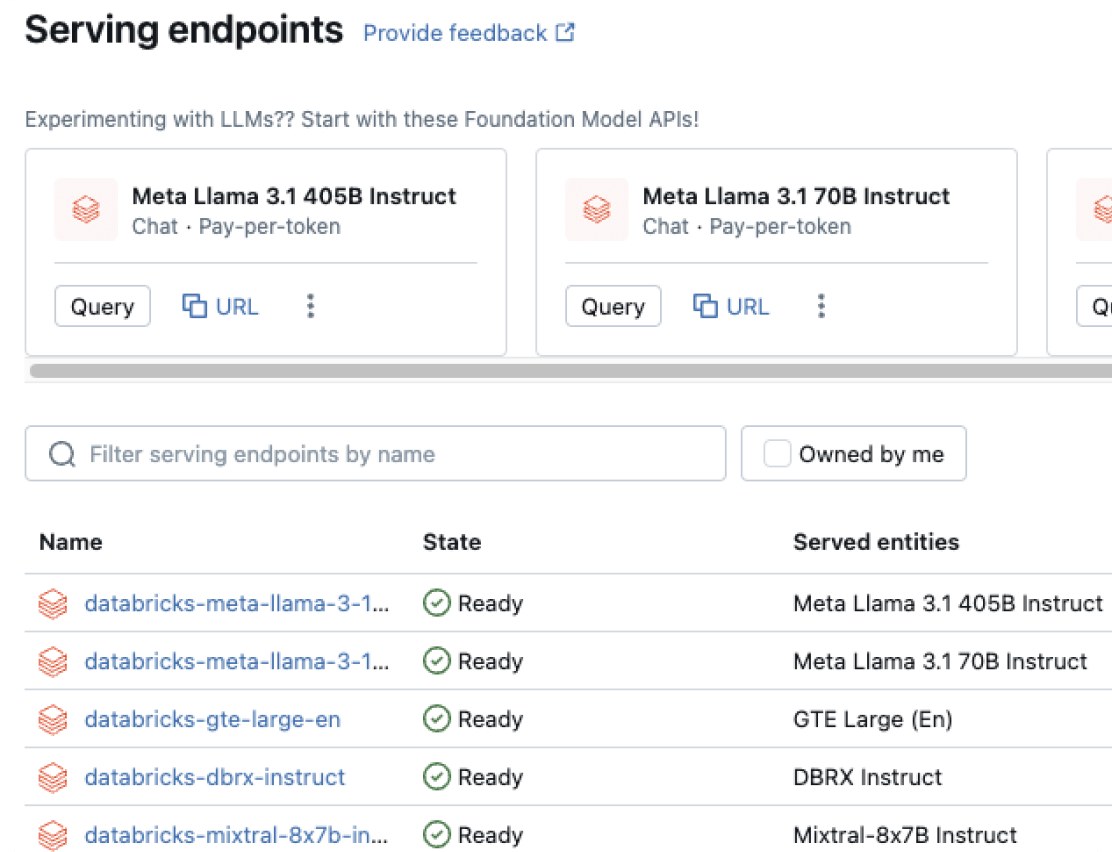
Deploy into production
Streamline operations with a robust serving, and MLOps and LLMOps solution
Mosaic AI Model Serving helps deploy agents, chains, GenAI models and classical ML models. MLflow, the leading open source MLOps and LLMOps solution, helps organizations deploy across the entire AI lifecycle for all models from training to deployment. It accelerates ML and GenAI use cases with a reliable process for data preparation, model development, deployment and monitoring.
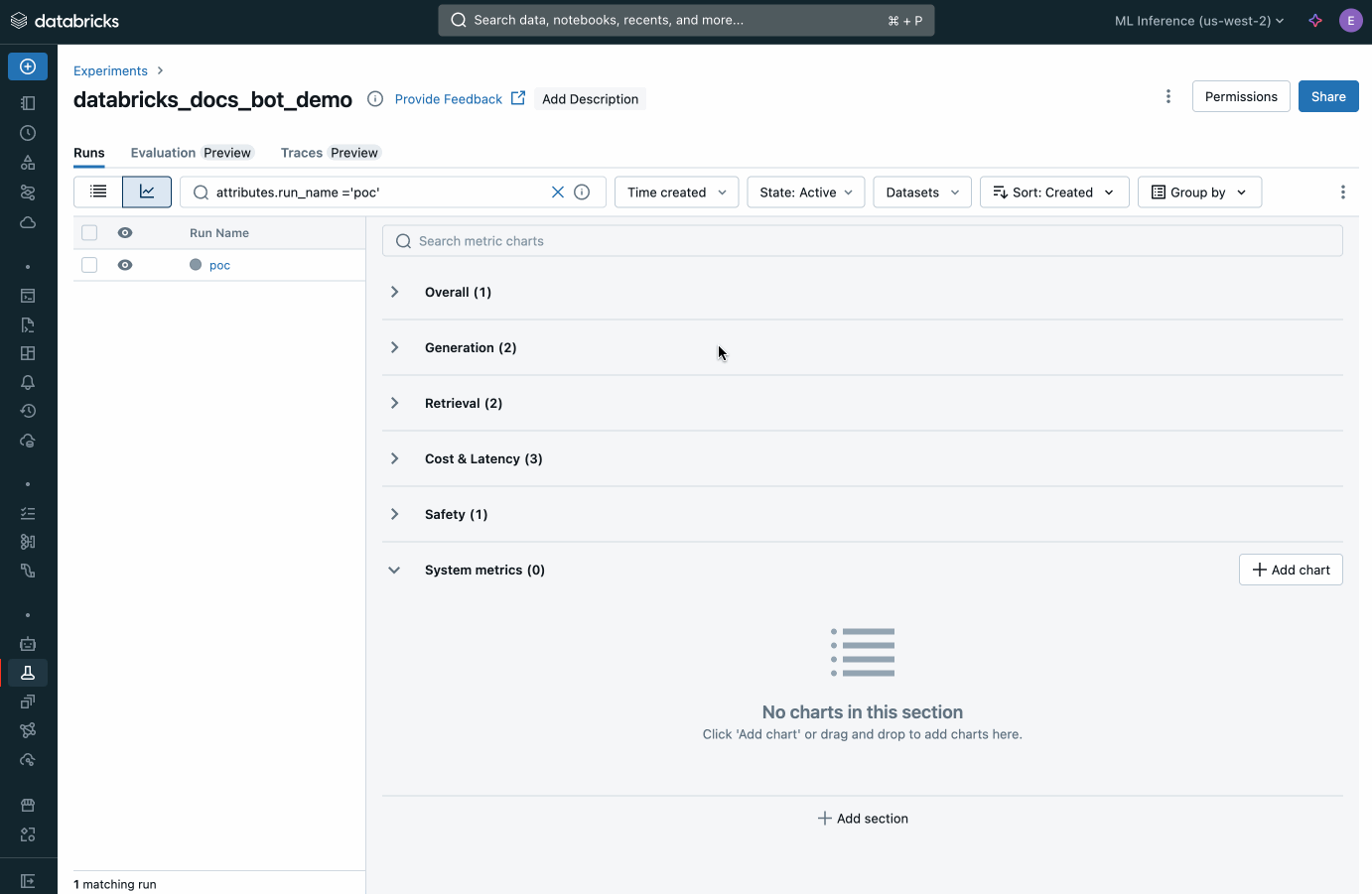
Quickly assess and improve agent performance
Ensure the quality and reliability of your agents
Mosaic AI Agent Evaluation provides built-in evaluation for agents using any combination of GenAI and ML models. It measures output quality with AI-assisted judges that grade responses and allow human experts to give peer feedback. If quality issues are found, you can trace the root cause, evaluate fixes and redeploy quickly.
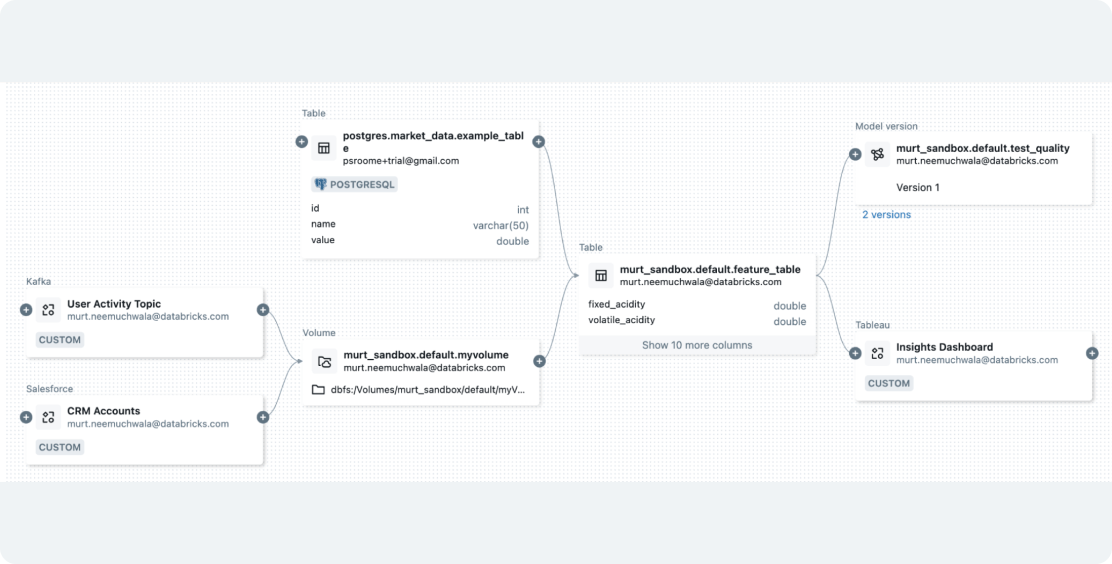
Achieve comprehensive governance for your agents
Maintain control and compliance throughout your entire AI workflow
With Unity Catalog, only Mosaic AI provides end-to-end governance for agents. You can govern and apply guardrails across all AI models, including the ones hosted outside Databricks. It automatically enforces proper access controls, sets rate limits, prevents harmful content and tracks lineage from data to deployment.
Take the next step
Mosaic AI FAQ
Ready to become a data + AI company?
Take the first steps in your transformation

